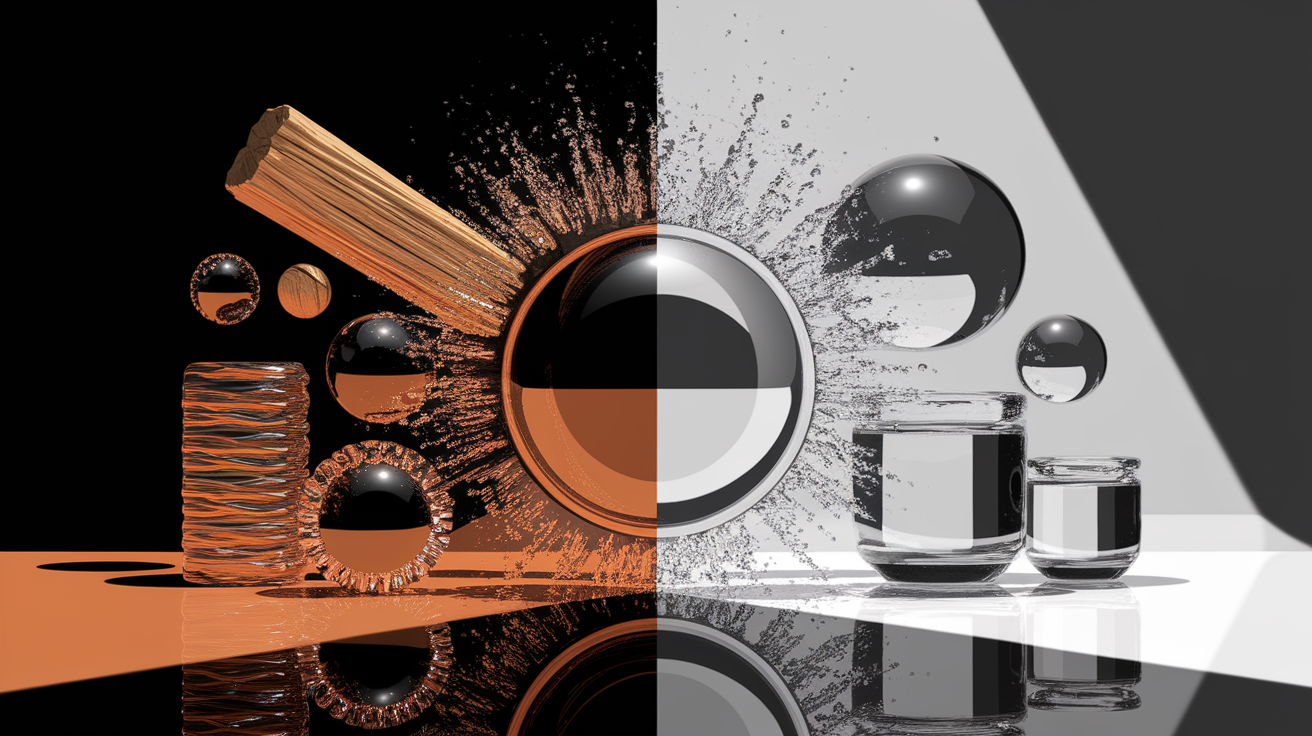Quick Answer: Glass is transparent because its unique, jumbled atomic structure creates a large energy gap that visible light photons cannot bridge. Without enough energy to be absorbed by electrons, light simply passes through the material undisturbed, allowing us to see what’s on the other side.
Have you ever stopped to wonder why you can see the world through a window but not through the wall it’s set in? Both are solid, yet one is clear and the other is opaque. The secret behind this everyday marvel isn’t magic; it’s a fascinating dance of physics that explains why glass is transparent. It all comes down to the unique way atoms in glass are arranged and how they interact with particles of light.
Seeing Through the Science
To understand transparency, we first need to get acquainted with the two main characters in this story: light and glass. Light travels in waves and is made of tiny energy packets called photons. You can think of these as little messengers carrying different amounts of energy, which we perceive as different colors of the visible spectrum. Light itself is a form of electromagnetic waves, a family that also includes radio waves, microwaves, and X-rays.

Glass, on the other hand, is a solid material with a very special molecular structure. Its properties at the atomic level are perfectly suited to let the messengers of visible light pass right through. The journey from opaque sand to clear glass is what sets the stage for this incredible property.
The Atomic Structure Behind Transparency
It might sound strange, but glass is made from sand—specifically, silicon dioxide (SiO2). So, if glass comes from opaque sand, why is one see-through and the other not? The answer lies in how the atoms are organized.

When sand is melted at a very high temperature and then cooled down quickly, its atoms don’t have time to arrange themselves into a neat, orderly pattern. Instead, they’re frozen in a random, jumbled state. This disordered structure is known as an amorphous solid. It’s different from materials like salt or quartz, which have a predictable, repeating crystalline structure.
A common myth, as clarified by sources like HowStuffWorks, is that glass is a very slow-moving liquid. This isn’t true; glass is a true solid. Its rigidity comes from its amorphous nature, which lacks the neat, repeating planes of a crystal that can scatter light. This random arrangement is the first key to its transparency, as it prevents light from bouncing off in all directions and lets it travel a more direct path.
Light and the Energy Gap
Here’s where we get to the core science of why glass is transparent. Inside every atom are electrons, which occupy specific energy levels, a bit like planets in orbit. For an electron to absorb a light photon, that photon must have just the right amount of energy to make the electron “jump” to a higher, vacant energy level. The difference in energy between these levels is called the band gap.

In glass, the band gap is very large. As a fascinating TED-Ed lesson explains, the photons that make up visible light simply don’t have enough energy to boost an electron across this wide gap. Imagine trying to throw a baseball to a friend on the roof of a skyscraper; if you can’t throw it high enough, it just won’t get there. In the same way, the low-energy photons of visible light can’t give an electron the push it needs. Since they can’t be absorbed, they have no choice but to pass straight through the glass. This process is called transmission.
This doesn’t mean glass is transparent to all types of light. Higher-energy photons, like those in ultraviolet (UV) light, do have enough power to excite the electrons. This is why glass absorbs most UV light. It’s a great example of how a material’s properties depend on specific atomic vibrations and energy levels.
Why Other Materials Aren’t Transparent
If glass lets light through, why doesn’t a wooden door or a metal spoon? Opaque materials have a different atomic and electronic structure that readily interacts with light.

- Opaque Solids (like wood or stone): These materials either have smaller band gaps that match the energy of visible light photons, or they have complex structures that scatter light in every direction. When a photon hits them, its energy is absorbed by an electron or bounced away, preventing it from passing through.
- Metals: Metals are a special case. They don’t have a band gap. Instead, they have what’s known as an electron sea model, where electrons are free to roam and can absorb any-energy photon that comes their way. They absorb the light and immediately re-emit it, which is why metals are shiny and reflective, but completely opaque. The way electron behavior determines material properties is on full display here.
So, the transparency of glass is truly a special property, born from a structure that is uniquely “unreceptive” to the energy carried by visible light.
Practical Importance of Glass Transparency
The ability of glass to transmit light is fundamental to our modern world. From the windows that light our homes and offices to the eyeglasses and contact lenses that correct our vision, transparency is essential. It allows us to build microscopes to see the invisibly small and telescopes to gaze at distant galaxies.

Scientists and engineers, like those at Penn State’s materials science department, study the properties of glass to improve it. For example, common soda-lime glass includes other ingredients to lower the melting temperature, making it easier and cheaper to produce windows without sacrificing clarity. This understanding of how molecular structure influences a material’s function is a cornerstone of science, similar to how we understand the unique molecular structure of transparent materials like water.
| Material | Primary Interaction | Result |
|---|---|---|
| Glass | Transmission | Transparent |
| Wood | Absorption & Scattering | Opaque |
| Metal | Absorption & Reflection | Opaque & Shiny |
| Water | Transmission | Transparent |
Looking Through and Ahead
The see-through nature of glass is a perfect illustration of how the hidden world of quantum mechanics shapes our everyday reality. What seems like a simple, inert material is actually a carefully arranged barrier that is selective about which parts of the electromagnetic spectrum it allows to pass. From ancient ornaments to the fiber-optic cables that power the internet, the clear and simple beauty of glass continues to enable human innovation.













